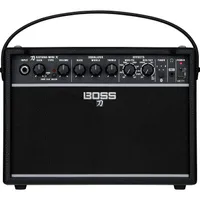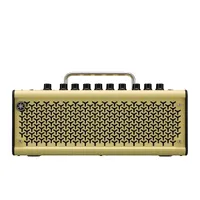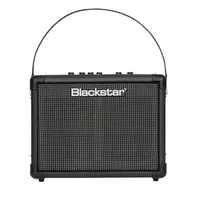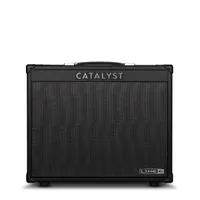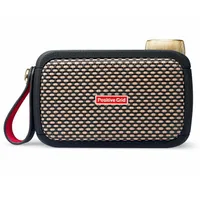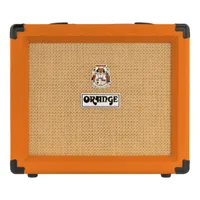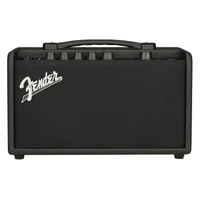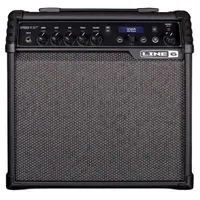Best practice amps 2025: hone your chops at home
My tried & tested pick of the best guitar practice amps to get your playing up to speed without any noise complaints, plus video demos of my top choices
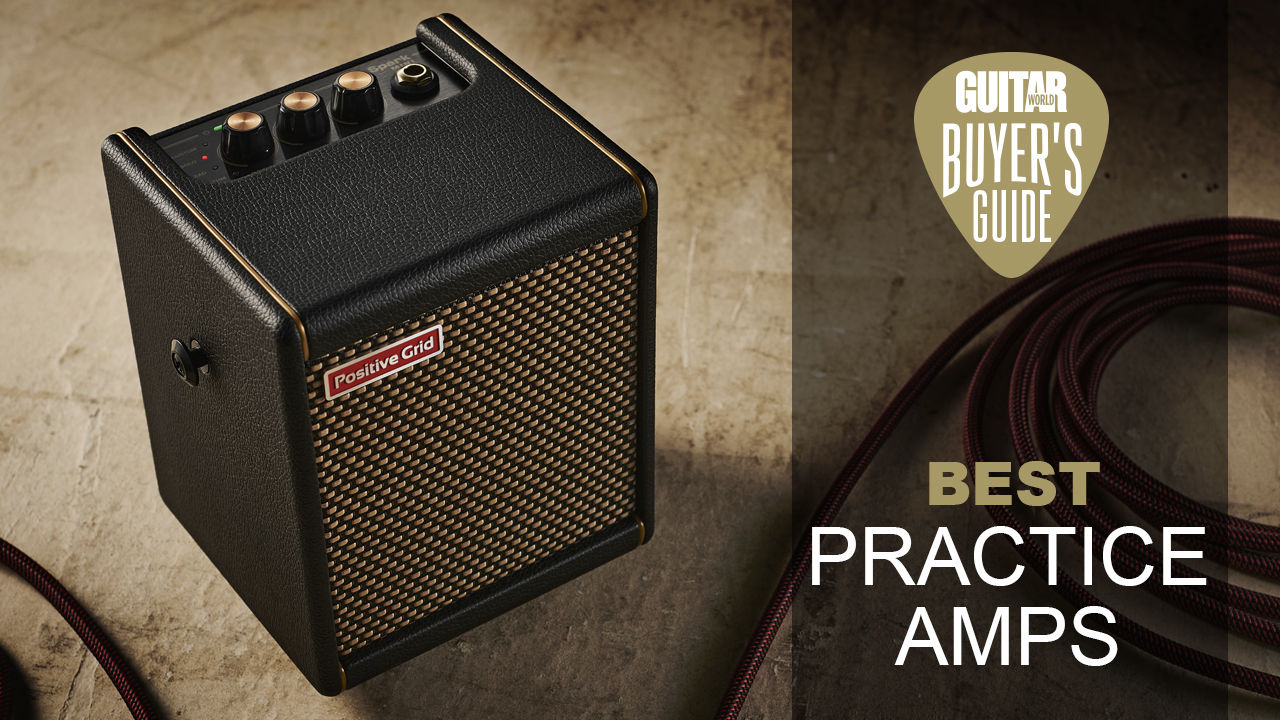
While I’d love to crank my tube amp at home, the truth is it’s just not convenient. Despite sounding incredible, my regular gigging amp is obnoxiously loud for anyone in the vicinity, whether that’s my partner, my neighbors, or anyone else within earshot. I’ve got to keep my guitar-playing skills sharp though, which is where the best practice amps come in.
I’ve been playing guitar for over 20 years now, and I’ve owned plenty of amplifiers in that time. For this guide, I’ve personally tested every one of the practice amps featured, examining the build quality, assessing the features, and of course, testing the sounds to determine which is truly the best. While some are better suited to certain tasks than others, I can wholeheartedly say that each of my picks will do a brilliant job of getting you great guitar tones at usable volumes and give you an ideal tool for practice.
These are all great amps in their own right, but if I had to pick one, I’d go for the Positive Grid Spark Mini. I’ve had one sitting on my desk for the past couple of years and I use it frequently, whether I’m quickly testing something for a review, songwriting for my band, practicing new scales or chord progressions, or just noodling for fun. If the Spark Mini is a little too pricey for you, then have a look at the Blackstar Fly 3, which delivers excellent tones for well below the $100 mark. The Guitar World team has filmed demo videos for a couple of my top picks too, so you get to see and hear them in action. We'll be filming more soon.
If you’re new to practice amps you can check out my full glossary to get yourself up to speed on the lingo, as well as my FAQs section which answers loads of common questions around practice amps. Practice amps are often confused with desktop guitar amps, and to be honest they're both pretty similar, but the latter tend to be a little more space-friendly if that's what you're looking for.
On the hunt for guitar gear savings this Black Friday? Shop our handpicked selection of the best Black Friday guitar deals.

"I'm constantly testing and reviewing music gear for Guitar World, with a focus on guitars, amps, pedals, modelers, and pretty much anything else guitar-related. I’ve been playing guitar for over 20 years now, and I’ve owned plenty of amplifiers in that time. For this guide, I’ve personally tested every one of the practice amps featured."
Our top picks
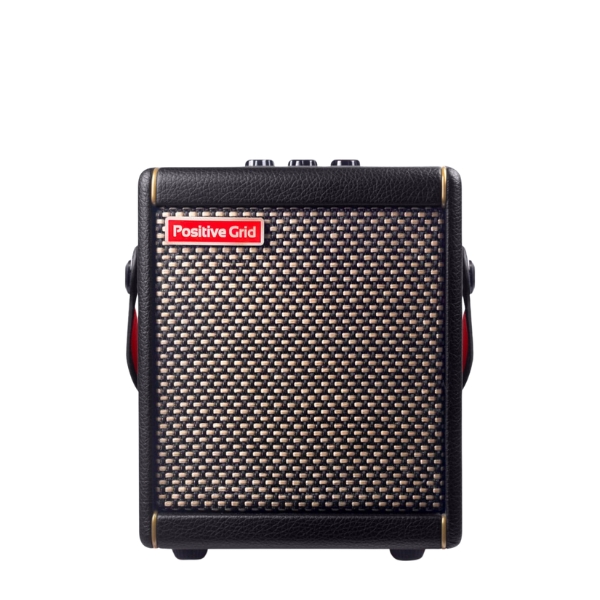
Packing a huge array of amp and effects models into a compact package that delivers plenty of volume, for me the Positive Grid Spark Mini delivers the best all-round experience when it comes to practice amps.
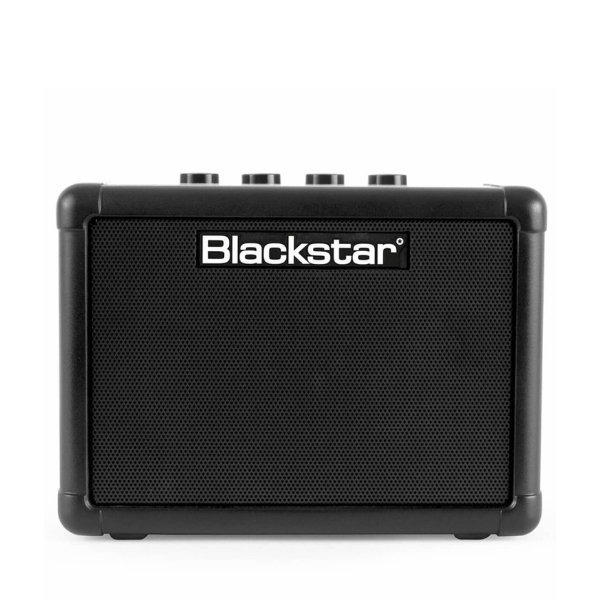
If you’re looking for a cheap option and aren’t too fussed about having loads of effects, the Blackstar Fly 3 is a great low cost option for practicing at home. Costing well below the $100 mark, it delivers great tones and even better value for money.

While the Boss Katana 50 Gen 3 is capable of doing much more than metal tones, if you’re after the best high gain sound for home use, the ‘brown’ setting on this amp is my favorite. It packs plenty of power too, so you can take it to practice and even gigs with you.
Best overall
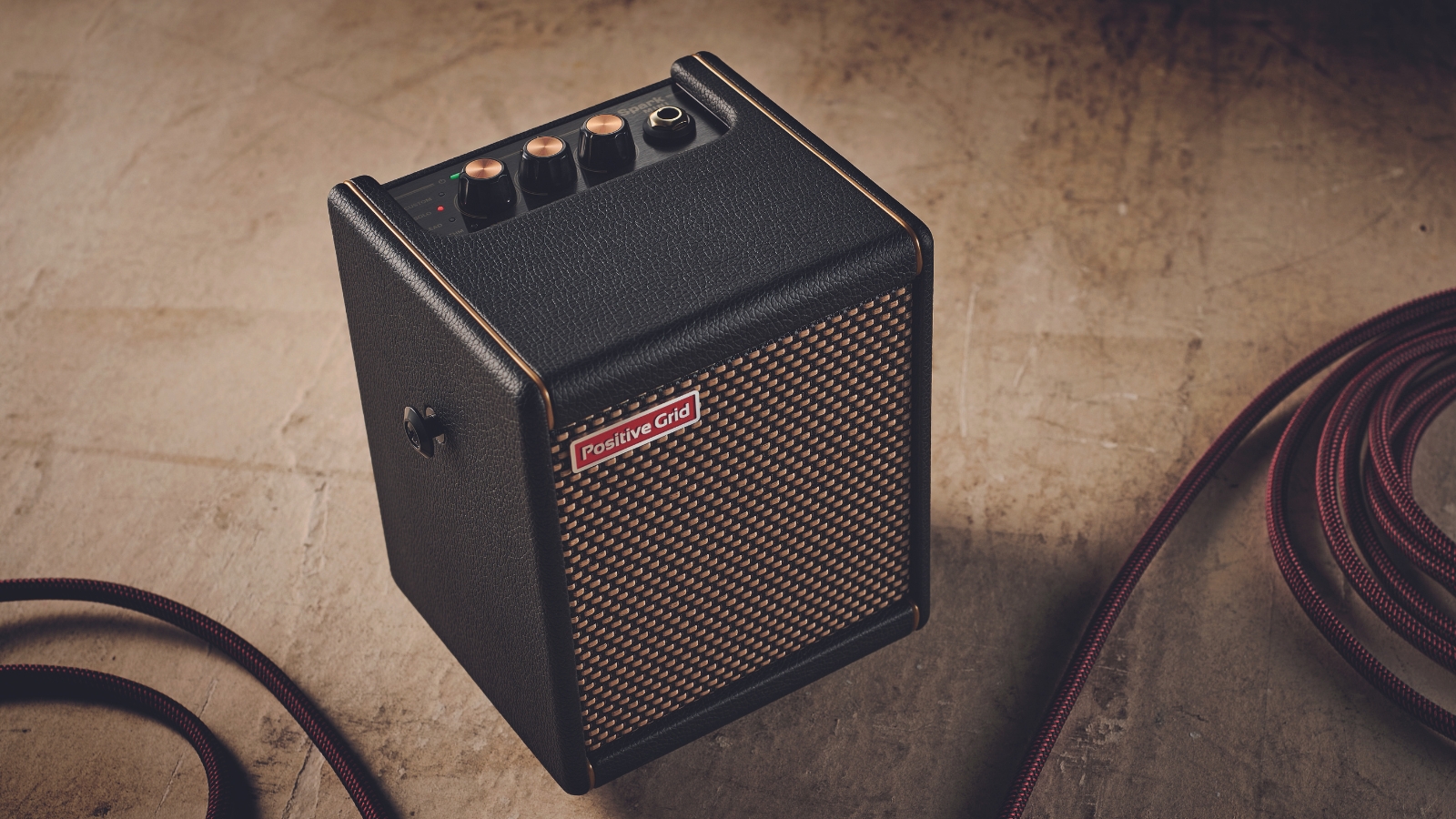
Specifications
Reasons to buy
Reasons to avoid
🫵 If you need lots of options in terms of amps and effects and you don’t mind using a smartphone while you practice, the Positive Grid Spark Mini delivers brilliant all-round performance as a practice amp.
✅ Buy if you want a great all-rounder: Small, reasonably priced, yet plenty loud and packed full of amps and effects, there's little reason to look past the Spark Mini as your practice amp of choice.
❌ Avoid if you like physical controls: There are only three knobs on the Spark Mini, so if you prefer to dial in your tones without using your smartphone, you'll want to look elsewhere.
Overview: Small, yet surprisingly loud, the Positive Grid Spark Mini is a powerhouse practice amp that packs a myriad of amp and effects models into one of the most complete practice amp packages available today. It’s small enough to fit on a desk or shelf and lightweight enough to carry around with you, making it my top choice for those looking for an effective practice solution.
Usability: To get the best out of the Spark Mini you will need to utilize your smartphone. Nearly all of its features are accessible via the Spark App, but you do have three knobs to switch between four presets, as well as adjust the guitar volume and the volume of any music you might be streaming to the amp.
The Spark App is really simple to use, giving you a nice visual user interface that lets you quickly swap out components of the existing tones or create your own from scratch. It also packs in a huge selection of additional features such as a tuner, metronome, a smart jam function that responds to your playing, and AI tone generation.
The ability to save your own presets is a nice touch, and on my own Spark Mini I like to have a clean, crunch, high gain, and lead tone on the dial to ensure the base needs are covered. This means I don’t have to worry about hooking up my phone if I want to switch off and get away from any social media for a bit.
Sounds: The sounds from the Spark Mini are simply superb. There’s such a huge range on offer that I can’t see any type of guitarist not being compatible with this amp, whether you play jazz or death metal. It sounds really full despite the small size, with a passive radiator inside to help accentuate the low end and give you some seriously fat tones. Whether you want clean Fender-type amp tones or Mesa-inspired high gain, Spark Mini can deliver both and everything in between.
The selection of effects on offer is equally abundant, with a huge range of overdrive and distortion effects as well as plenty of modulation, reverb, and delay options. It means you can dial in some super ambient sounds, or just add a touch of spring reverb and overdrive to liven up your sound.
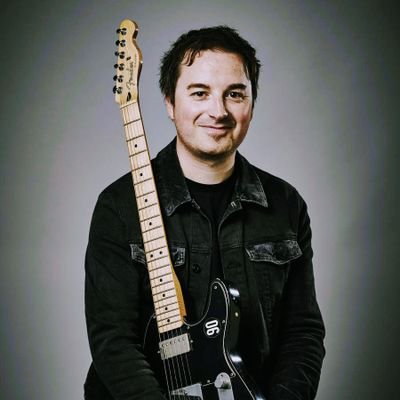
“While the asking price may initially seem on the higher side for such a diddy amp, the Spark Mini is so big on features it is ahead of the competition when factoring in the quality, portability and value you get – plus the potential to record with this via USB. We think it would prove money well spent because it encourages you to play more and makes it easier to stay inspired when playing alone.”
Read more: Positive Grid Spark Mini review
Test | Results | Score |
Build quality | Robust quality, great looks | ★★★★½ |
Usability | Easy to dial in but reliant on smartphone | ★★★★☆ |
Sounds | Superb array of tones | ★★★★½ |
Overall | A phenomenal practice amp | ★★★★½ |
Best budget
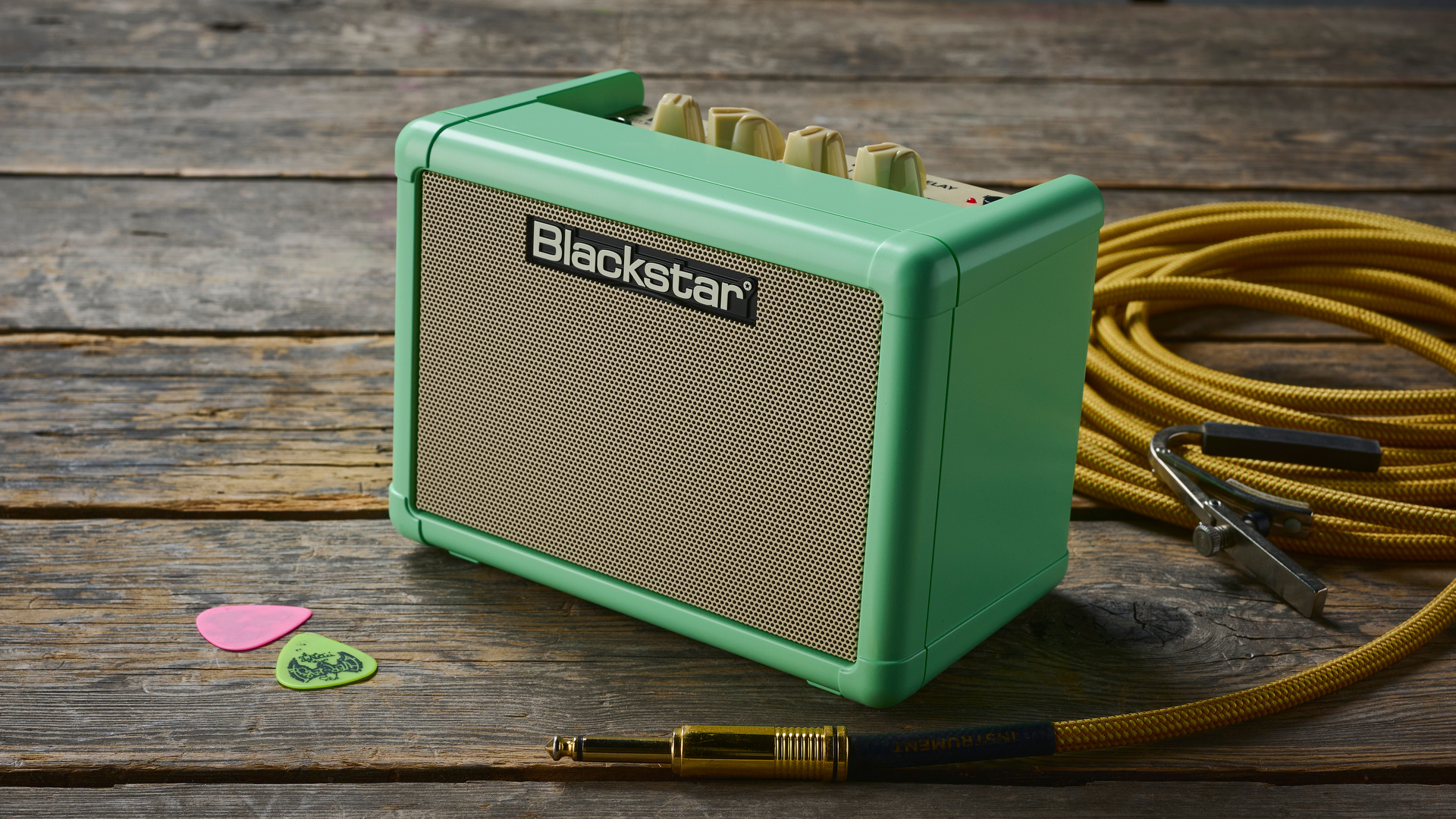
Specifications
Reasons to buy
Reasons to avoid
🫵 For the cash-strapped or beginner guitarist, the Blackstar Fly 3 is the natural choice. Costing significantly less than the vast majority of practice amps out there, the Fly 3 delivers great tones and big sound in an outstanding value for money package.
✅ Buy if you want a budget option: Typically priced around or below the $100 mark, this is the best option for a practice amp if you've got a very tight budget.
❌ Avoid if you don't need portability: If you don't plan on carrying your amp around, you're better off opting for a full-sized practice amp.
Overview: It might be one of the oldest amps on this list, but the Blackstar Fly 3 absolutely still has it when it comes to being the best budget practice amp. Its compact size and low cost make it a great choice for beginners, but it’s got plenty of versatility to deliver for more experienced guitarists who don’t want to spend huge amounts of money on something they’ll only use at home or on the road.
Usability: For me, the Fly 3 is the easiest amp to use in this guide. There’s no modeling, no smart apps, and no Bluetooth required to get it up and running. Just plug in, turn some knobs, and away you go. Its ease of use is absolutely its strength, with a single EQ knob that allows you to cover a lot of ground in conjunction with the gain and volume knobs for each channel.
The tape delay emulation has a level and time control which means you can take it from a nice slapback sound right through to more ambient and spacious settings. There’s no Bluetooth, but if you have a phone or device with a headphone out you can run a line in to play along to tracks. It also has a headphone output that doubles as an emulated output for recording via an audio interface.
Sounds: When I was testing the Fly 3 I found it remarkably versatile considering the small selection of sounds it has in theory. It’s a 2-channel amplifier but it can go from clean to modern metal across those two different settings thanks to the separate gain and volume knobs. It makes it great as a little practice amp as no matter what you’re feeling on a particular day you can dial in the sound you need.
It isn’t the most versatile in terms of EQ as there’s only a single knob, and for me the sweet spot was between the 10 and 2 o’clock mark. Too far to the left and I found it quite anemic whereas too far to the right it got a little muddy for my taste. Combining the EQ with the tape emulation can get you most of the sounds the average guitarist will need though, which is a huge plus point when you consider its low cost.

“Overall, it’s hard to fault the Fly 3 as a home practice solution on the cheap. It can give you pristine cleans, crunchy classic rock, slapback slathered blues licks, and even modern metal, thanks to its twin-channel design. It won’t trouble your regular amp when it comes to tone, but for sitting at your desk or in your living room and jamming out your favorite licks or new song ideas, it’s a brilliant companion.”
Read more: Blackstar Fly 3 review
Test | Results | Score |
Build quality | Plasticky, but solid | ★★★★☆ |
Usability | Easy to use but lacking some functionality | ★★★★☆ |
Sounds | Surprisingly versatile but needs tweaking | ★★★★☆ |
Overall | For the money, it’s hard to beat | ★★★★☆ |
Best for metal
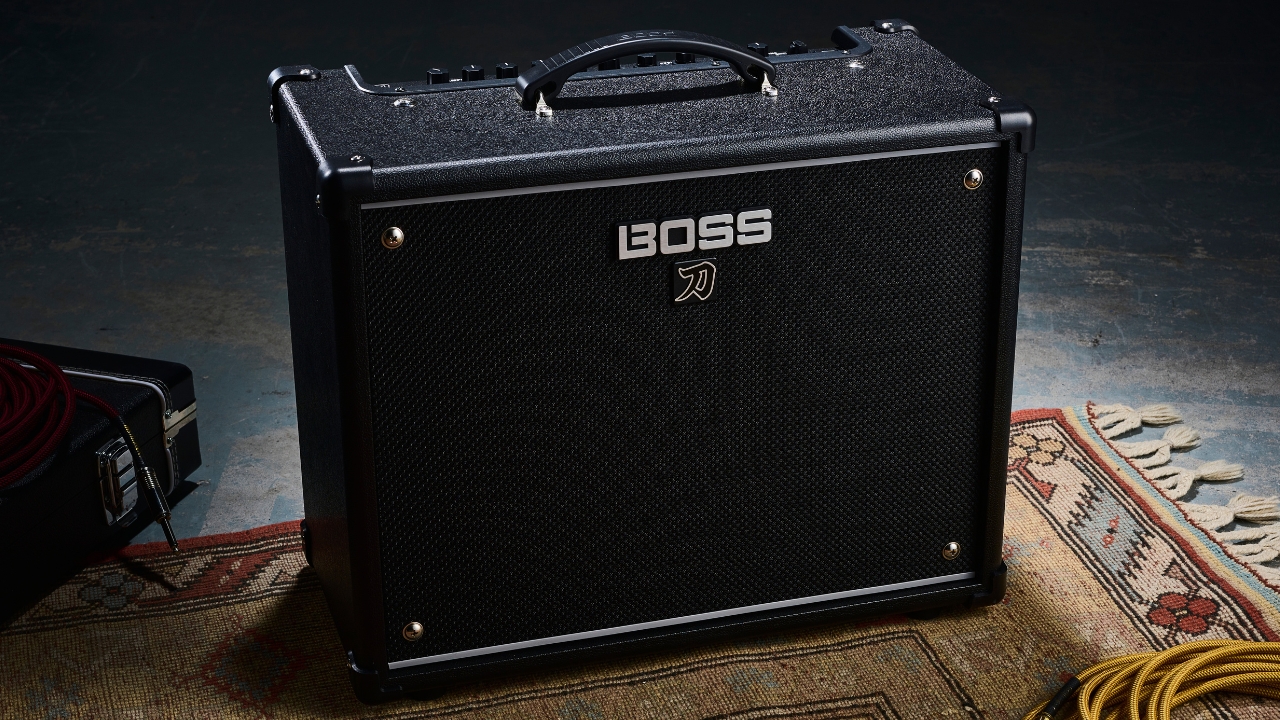
Specifications
Reasons to buy
Reasons to avoid
🫵 If you like to get heavy when you practice, I think the high-gain tones on the Boss Katana are some of the best in the business. It’s not a one-trick pony though, and can cover a huge array of sounds and styles.
✅ Buy if you want metal tones: With a great high-gain amp selection of plenty of stompboxes to choose from, the Katana is our choice for getting great metal tones at home
❌ Avoid if you don't need many effects: If you're not into effects, you'll want to look elsewhere.
Overview: The Boss Katana series is arguably the most popular modeling amp in the world right now, and Gen 3 builds on an already stellar base to add some great new features and refinement. I’ve picked the Katana 50 Gen 3 for metal tones as I’m absolutely in love with its ‘Brown’ channel, but it can do pretty much anything you ask of it.
Usability: There is an app for downloading and tweaking tones, but so much of the Katana 50 Gen 3 is controllable using the actual controls that you might find yourself not bothering with it. With ten knobs across the top, it’s all about hands-on control, and every major setting is available here to be tweaked, making it a paradise for those who can’t stand smart apps and software-driven practice solutions.
The power attenuation switch is another key component that makes the Katana one of the most versatile amps on this list, as it’ll be just at home during practice as it is gracing the stage of your local venue. It’s got a USB-C connection to use it as an audio interface as well as a headphone output for silent practice. You can even connect a footswitch to it for additional functionality, making it a great all-rounder.
There is an option to stream audio via Bluetooth to the amp too, but this is a paid extra and not included with the amp.
Sounds: Compared to the previous iteration of Katana, I found a noticeable difference with the Gen 3. It’s had its amp modeling improved significantly, and as a result sounds far more expressive and three-dimensional versus previous models. It’s an improvement all across the frequency spectrum, and I particularly enjoyed the new ‘Pushed’ setting that very realistically conveys the feel of a tube amp on the edge of breakup.
Boss’ effects need little introduction, and with over 60 effects available you can craft a huge array of tones. I really love the delay tones available in the Katana, but there are plenty of reverb and modulation effects available too. They’re crisp and clear sounding as you’d expect from Boss, giving you plentiful options whether you’re looking for simple slapback delay or you want to get into some properly ambient shoegaze-type sounds.
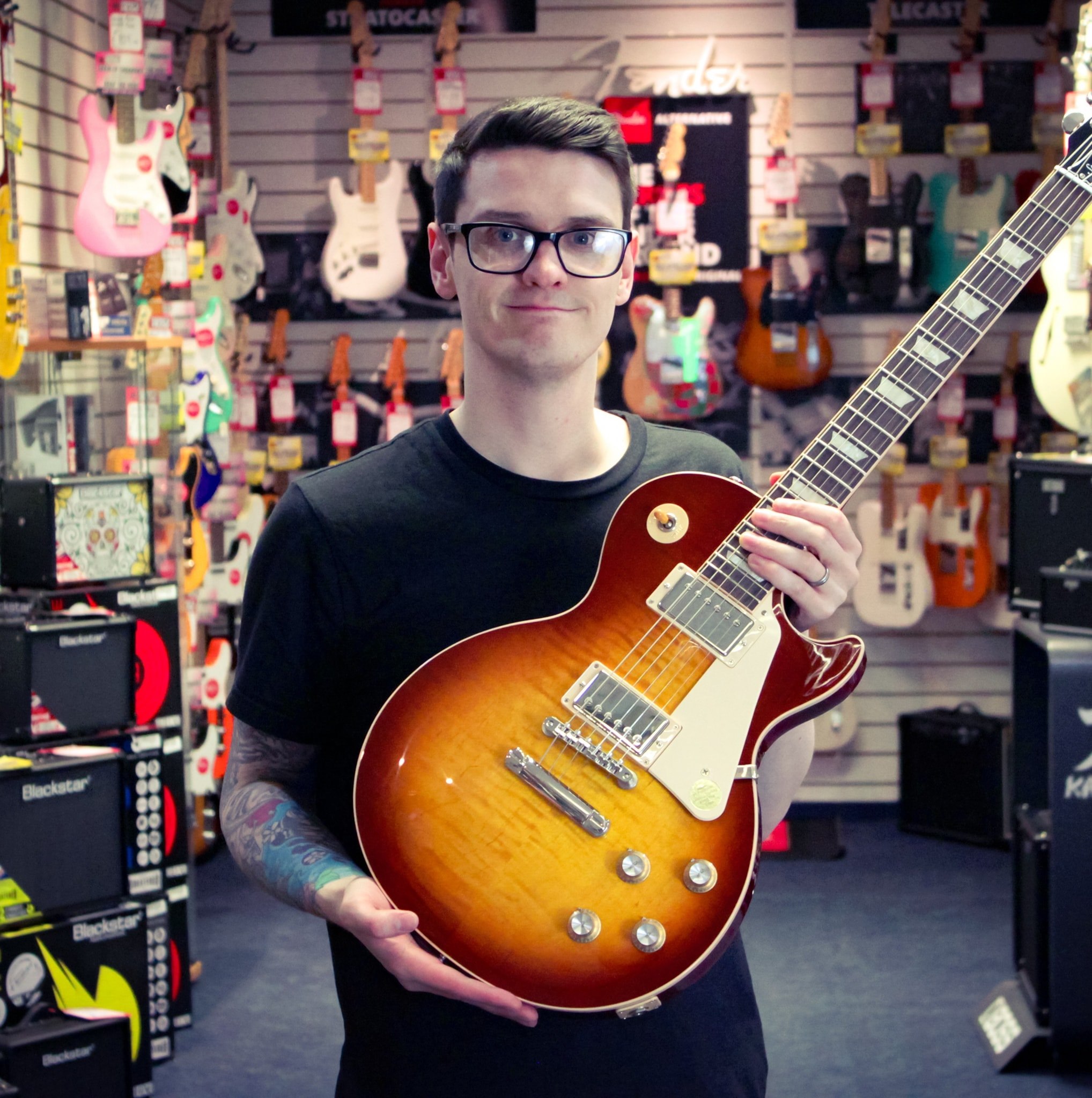
“Paired with my favorite ‘54 Strat reissue, it was a match made in heaven. Single notes rang out as clear as a bell while digging in and playing aggressively returned the perfect amount of grit – a seriously impressive feat for an affordable modeler.”
Read more: Boss Katana 50 Gen 3 review
Test | Results | Score |
Build quality | Built for the road | ★★★★½ |
Usability | Simple to set up but plenty of depth | ★★★★½ |
Sounds | Amongst the best modeled tones I’ve heard | ★★★★½ |
Overall | A superb amp, great for metal and everything else | ★★★★½ |
Best tube amp
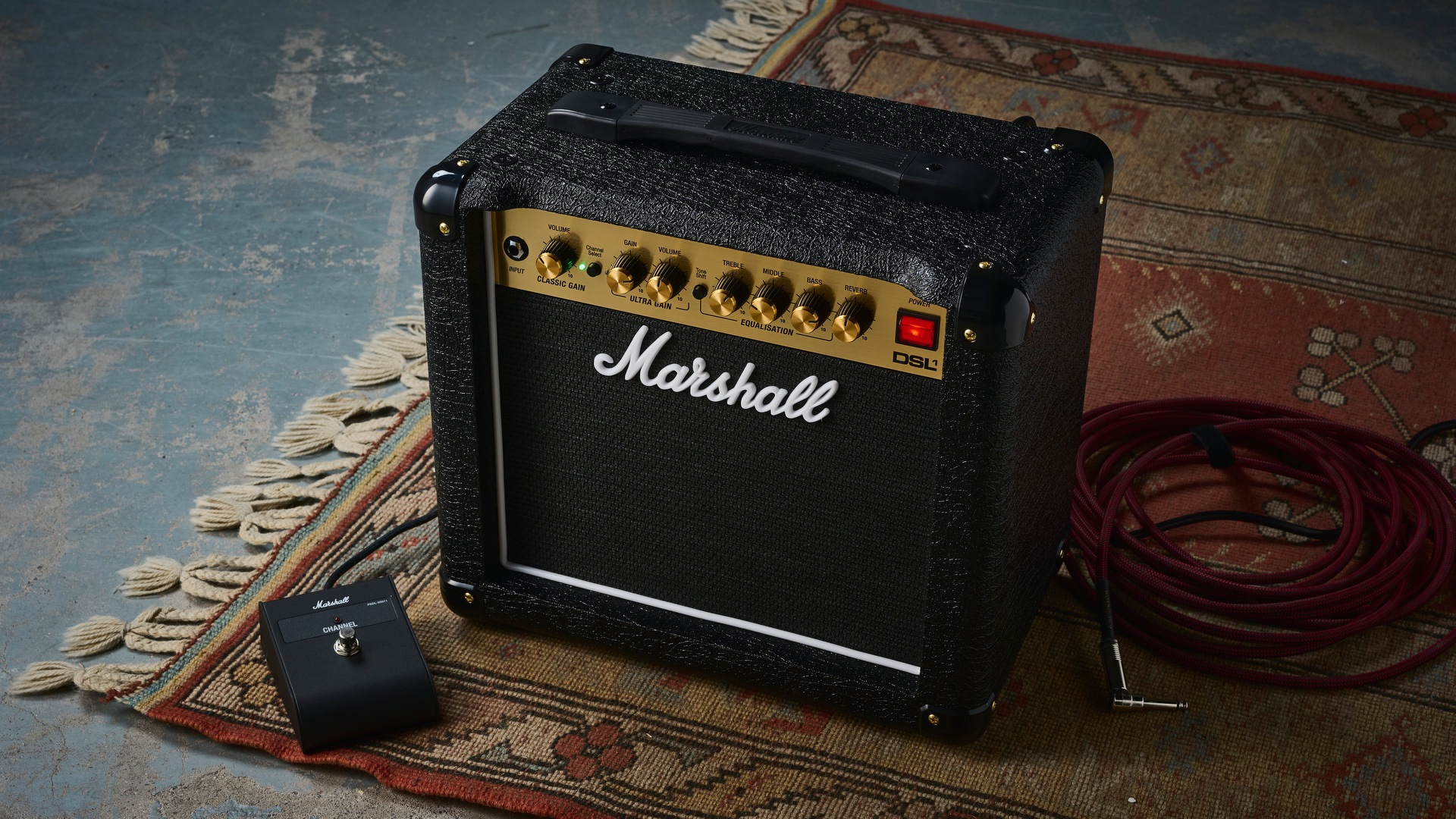
Specifications
Reasons to buy
Reasons to avoid
🫵 If you just can’t do without a tube amp when you’re practicing but are getting frequent noise complaints, the Marshall DSL1CR is your best option. It delivers glorious tube tone at low volumes, as well as being super versatile in terms of tones.
✅ Buy if you want real tube tones: This miniature Marshall delivers stellar tube tones at home.
❌ Avoid if you want effects: This model does not include any effects, apart from a digital reverb.
Overview: Marshall amps are amongst the most revered in rock and roll history, and they’re also stupendously loud, which makes using them at home pretty much impossible. Enter the Marshall DSL1CR, which is a 1-watt, tube-powered tone monster that gives you hallowed guitar sounds at a reasonable volume.
Usability: I love the DSL1CR because it’s just a good old-fashioned guitar amp with two channels, a three-band EQ, and a built-in reverb. That means it’s incredibly easy to get up and running - no smart apps, Bluetooth, or WiFi connectivity required. Channel switching is handled by an included footswitch with a generous cable length, and there’s a universal reverb controlled by a single knob.
It’s still a loud amplifier when in default mode, even at 1-watt a tube amp will be too much for home use when you start cranking it. On the back though you’ll find a tiny button that reduces the power output to 0.1 watt, which works nicely for practicing at home. There’s also a headphone and emulated output for silent practice or recording.
Sounds: Overall, the DSL1CR sounded fantastic in my testing. Yes, there are some natural low-end limitations with the smaller speaker, but ultimately this didn’t really affect the tone at the volumes I was playing it at. The three-band EQ means you can dial in a lot of different tones, and there’s an additional tone shift button that lets you scoop the mids for a more modern metal tone.
The two channels mean you can get everything from pristine clean to full-on Swedish melodic death metal, with the classic gain channel handling clean and crunchy tones, while the ultra-gain side gets you more saturated tones. The combination of gain and volume knobs on the ultra-gain channel also helps you get more saturation at lower volumes, making the DSL1CR a really versatile bit of kit.

“If you must have a tube amp for practice, the Marshall DSL1CR will absolutely do the job for you. The low power mode makes it more than usable at lower volumes, delivering uber-satisfying edge-of-breakup tube saturation that won’t annoy your neighbors, partner, children, or small animals.”
Read more: Marshall DSL1CR review
Test | Results | Score |
Build quality | Looks fantastic, great build quality | ★★★★★ |
Usability | Super easy to dial in, plentiful features | ★★★★½ |
Sounds | Gorgeous tones, still pretty loud though | ★★★★☆ |
Overall | For tube tones at home, it’s the best | ★★★★½ |
Best mini
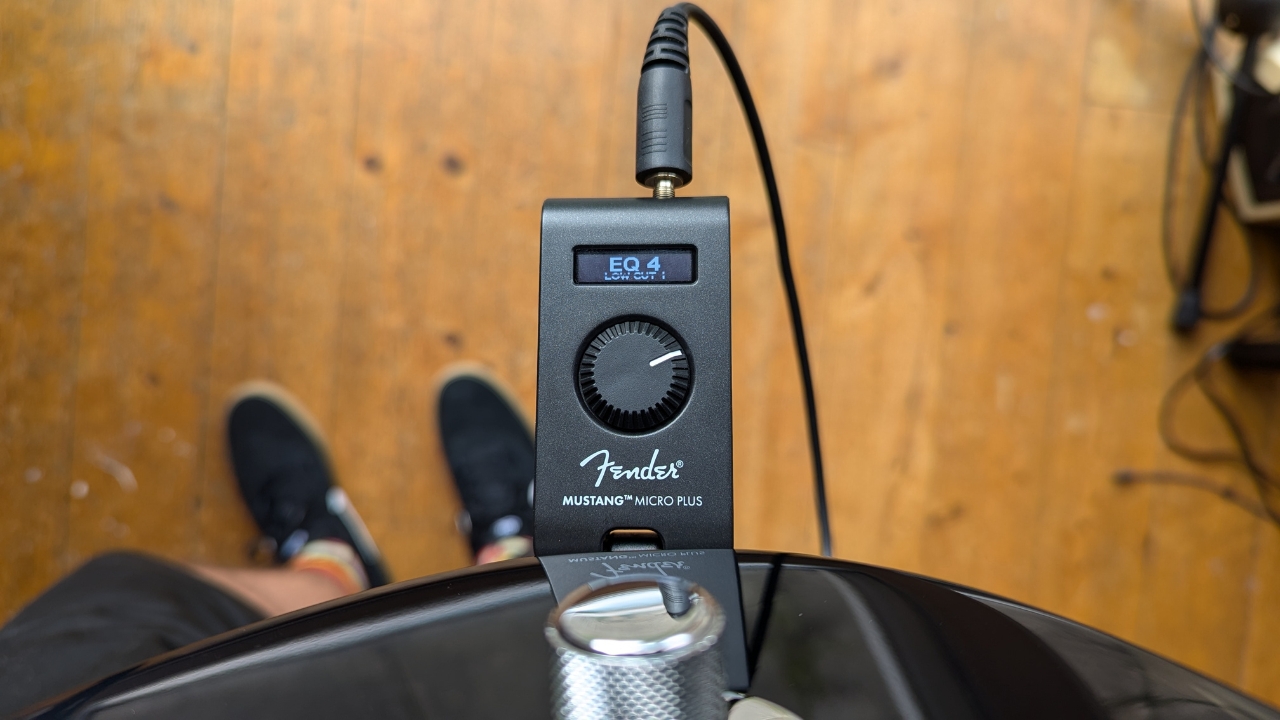
Specifications
Reasons to buy
Reasons to avoid
🫵 If you need a compact practice amp that delivers a variety of guitar tones, it doesn’t come much smaller than the Mustang Micro Plus headphone amp for guitar. Quite literally pocket sized, armed with this and a pair of headphones you’ll have a take-anywhere practice setup.
✅ Buy if you want a tiny amp with great tones: This headphone amp is a great choice if you're short on space, taking up very little room at home but providing phenomenal tones.
❌ Avoid if you want quick switching: It's not really possible to change sounds quickly on this, so it might be a hindrance if you like to change things up a lot.
Overview: Having been recently updated, the Fender Mustang Micro Plus is a significant advancement on Fender’s original headphone amplifier. It’s now got a screen, improved tones, and an even bigger selection of sounds for you to choose from. Its tiny size means you can take it anywhere, making it the ultimate travel guitar amp.
Usability: Like some of the other amps on this list, the Mustang Micro Plus does have a smartphone app which gives you options to deep dive into settings, but it is entirely possible to use it with just the onboard controls. If you do want to start tweaking your invidivudal guitar amp EQ settings or adjusting your delay times however, you will need to use the app.
The new built-in tuner makes it even more useful than the previous iterations, and you can use the app to craft all your presets then just cycle through at will once the initial setup is done. One thing to note is that the app operates in horizontal mode, which is great for seeing more of your signal chain, but might be annoying if you have your phone on a vertical-only stand.
It’s also not really possible to switch presets quickly with this headphone amp, so if you like moving between sounds a lot you might be better off with something that has a footswitch or get used to manipulating the volume control on your guitar.
Sounds: The quality of the tones is significantly improved from the original, as is the selection of sounds available. I will say though, to get the most out of this practice amp you’ll need a decent set of guitar amp headphones, preferably closed back if you want to keep the noise levels down.
It’s a great shout for Fender amp lovers, with all the iconic Fender amps accurately modeled here. The high-gain amps are also massively improved versus the original, which was a little weak in this department. I also found the selection of effects available absolutely stellar, and the base level presets are great if you just want a selection of quick start tones.

“A few niggles aside, the Fender Mustang Micro Plus is very much the upgrade that was needed for one of the most popular headphone amps for guitar. The addition of a small screen, app compatibility, and the ability to save presets makes it a worthwhile practice companion that costs relatively little.”
Read more: Fender Mustang Micro Plus review
Test | Results | Score |
Build quality | Decent quality, a bit plasticky | ★★★★☆ |
Usability | Lots of features, no quick switching though | ★★★★☆ |
Sounds | Superb sound selection | ★★★★½ |
Overall | One of the best compact practice solutions | ★★★★½ |
Best for bass
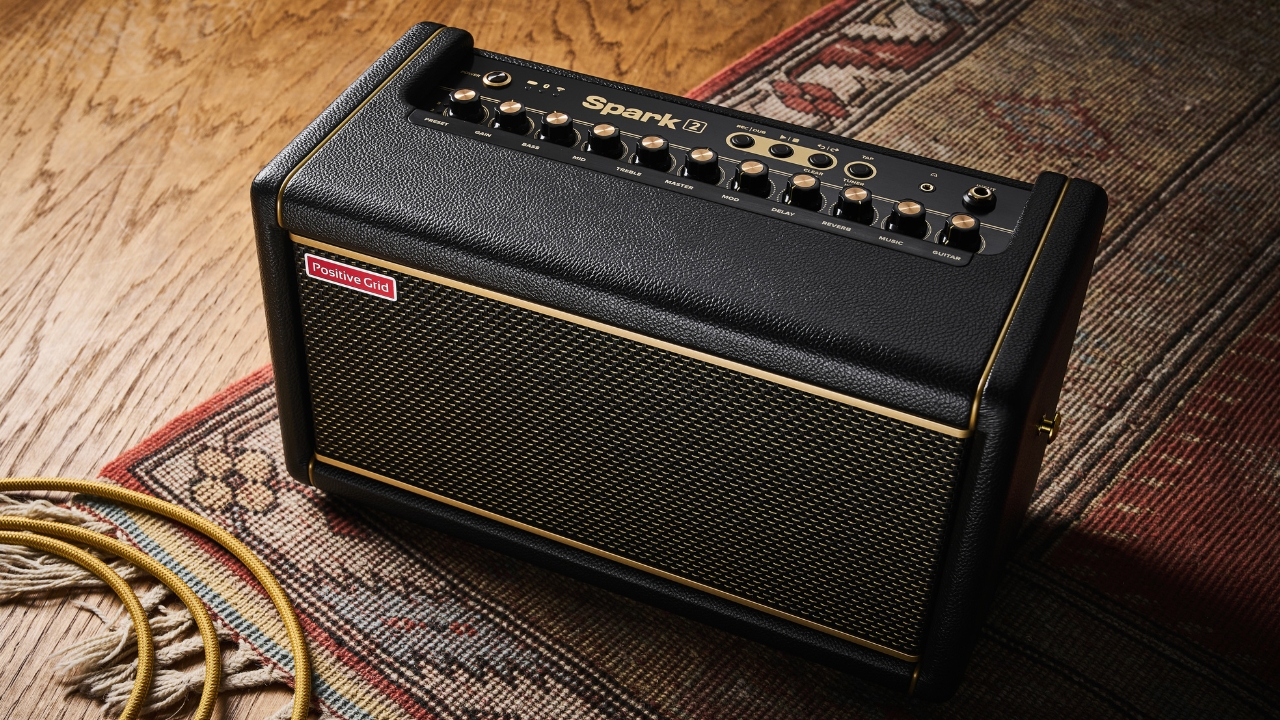
Specifications
Reasons to buy
Reasons to avoid
🫵 I’ve chosen the Spark 2 for bass players because it features dedicated bass amp presets and has full-range speakers which deliver plentiful low end. With 50 watts of power it can get loud when you need, but still sounds great at low volume.
✅ Buy if you want to practice bass: It may feel a little left-field, but this is one of the few practice amps with dedicated bass guitar amp models and plenty of effects
❌ Avoid if you don't like apps: To get the most out of this amp, you need to use the free Positive Grid Spark app.
Overview: The Spark 2 is a powerhouse that can play a lot of different roles, but if you’re exclusively practicing bass guitar, I don’t think there are many options better than this. With precious few dedicated options for bass players to practice at home, it’s my top choice for lovers of the low-end.
Usability: The Spark 2 (and Spark amps in general) do live and die by their smartphone app, so if you don’t like having a smartphone with you while you practice, you’ll want to look elsewhere. The Spark App is one of the best and most fully featured out there though, featuring a metronome, an AI-powered backing band, AI tone generation, a built-in tuner, and the ability to download user-created tones.
You do have some limited controls on the top of the amplifier, so theoretically once you’ve crafted your favorite presets you can do away with the app and just focus on your playing. The new addition of a looper further enhances the power this amp has as a practice tool, again controlled with your smartphone or with a footswitch that’s sold separately.
Sounds: The sounds of the Spark 2 are some of the best I’ve heard when it comes to compact practice solutions. The full-range speakers deliver all across the frequency spectrum from rumbling lows to smooth and sparkly high end, and the quality of the effects is simply superb. The slight angling out of the speakers give it a very three-dimensional tone and it sounds just as good at low volume as it does cranked.
There are five bass amp models which might not sound like a lot given the price, but they’re all excellently emulated, and annoyingly for bassists, you just don’t have that much choice at the moment. For me, Spark 2 handles low-end tones better than any of the other practice amps I’ve tested, and if you want to practice at home with decent tone, it’s absolutely worth the investment.

“The original Spark is the definition of a modern classic amplifier, and Spark 2 is the perfect sequel. Adding more of everything in the best possible way, Positive Grid has knocked it out of the park when it comes to the latest iteration of their Spark amp. It is more evolution than revolution, but they’ve delivered everything guitarists have been asking for and more. It’s simply superb.”
Read more: Positive Grid Spark 2 review
Test | Results | Score |
Build quality | Rock solid build | ★★★★½ |
Usability | Huge array of features, relies on smartphone though | ★★★★☆ |
Sounds | Some of the best sounds I’ve heard in a practice amp | ★★★★½ |
Overall | A brilliant option for bass guitarists | ★★★★½ |
Also consider
Boss Katana Mini X
10W | 1x5” | 6 amps | 10 FX
With more power and a single 5-inch speaker, the Katana Mini X is a seriously good upgrade over the previous iteration of the amp. With six different amp tones you can cover a nice range of guitar tones and its compact size makes it great for practice. I love the ‘flat’ mode it has too, which lets you use it with an amp modeler.
★★★★½
Read more: Boss Katana Mini X review
Yamaha THR30II Wireless
30W | 2 x 3.5" | 15 amps | 10 FX
Although the Yamaha THR30II doesn’t look an awful lot like a guitar amplifier, that’s kind of the whole idea. It can sit anywhere in the home due to its ‘home-audio’ look, keeping guitarists and non-guitarists happy all the same. You can also use the THR30II to stream audio via Bluetooth, making it great for those who want something dual-purpose.
★★★★★
Read more: Yamaha THR30II Wireless review
Blackstar ID Core 10 V3
10W | 2 x 3" | 6 amps | 12 FX
It may be a practice amp, but that doesn't mean the Blackstar ID: Core 10 is boring. This incredibly versatile amp is jam-packed with tonal possibilities. It is almost impossible to get a bad sound from its six channels and twelve effects - trust me I tried! From boutique clean tones to face-melting rock tones, this is a little amp that can do it all.
★★★★★
Read more: Blackstar ID Core 10 V3 review
Line 6 Catalyst 100
100W | 1 x 12" | 12 amps | 27 FX
The Catalyst series offers a more simplistic, traditional take on the ever-popular modeling amp, reminiscent of the Boss Katana series. The amp tones sound spectacular – which is all down to the HX technology that this amp borrows from the Helix range. There are six separate amp models which span from super clean to ultra-dirty, which makes the Catalyst an impressively versatile piece of kit. The 18 other effects, as well as six separate types of reverb, help to bring these tones to life even further – and for the money, the amount of choice you have is incredible.
★★★★½
Read more: Line 6 Catalyst 100 review
Positive Grid Spark Go
5W | 1x1.7” | 33 amps | 43 effects
Although it lost out to the Fender Mustang Micro Plus in terms of pure size, if you don’t fancy a headphone amp, then the Positive Grid Spark Go is about as small as it gets. Despite the tiny size it’s surprisingly loud, and features the full complement of excellent amp and effects models from Positive Grid. Obviously it doesn’t deliver as much low-end as others on here, but it’s a great option if you need to travel with an amp or take up as litle room as possible.
★★★★½
Read more: Positive Grid Spark Go review
Orange Crush 20
20W | 1 x 8" | 2 amps | No FX
Thick, chewy, and heavy on the mid-range, Orange amps have one of the most distinctive and recognizable overdriven tones on the market. Its traditional tube models can be at the more expensive end of the ladder, yet with the Orange Crush 20 you can access amazing tone for a fraction of the cost and without the ridiculous volume levels.
★★★★☆
Read more: Orange Crush 20 review
Fender Mustang LT40S
40W | 2x4” | 20 amps | 25 FX
Another great desktop amp, the Mustang LT40S can get seriously loud if you need it. It’s got a great selection of Fender amp tones and great quality effects too. I love the encoder dial at the top which makes dialing in settings a breeze without having to resort to using your phone.
★★★★☆
Read more: Fender Mustang LT40S review
Line 6 Spider V 30 MKII
30W | 1 x 8" | 79 amps | 82 FX
Despite their budget amp reputation, the Spider range actually offers superb value for guitarists who like to try a little bit of everything. And, with over 200 preset amps, models and variations included, you’re bound to find something here you can use for practice.
★★★★☆
Read more: Line 6 Spider V 30 MKII review
How to choose the best practice amp for you
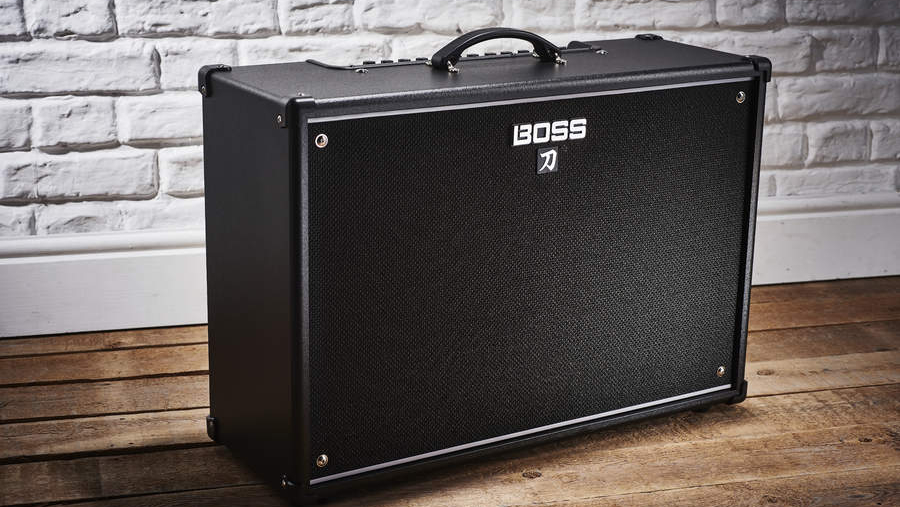
If you’re buying for the first time, or you just want to know what to look for in a practice amp, I’ve put together this section with what you should be looking at before you pull the trigger on a new amp. Leaning on my twenty-plus years of experience playing the guitar, this is everything you should consider before you make a purchase.
1. Volume
The key facet when choosing a practice amp is volume considerations. Chances are you’re going to be using the amp at home, so you want it to sound good at low volumes. You might also want to jam with friends, or even take it to a practice with you, so it’s good to look at the power rating of your amplifier before you buy.
If you’re using your amp exclusively at home, then you probably won’t need more than 20 watts. For jamming with friends or taking to practice, look at something around the 50-watt mark, which should be plenty to keep up with a drummer.
2. Solid state or tube?
To be totally honest, tube amps are pretty much unusable at home. To be at their best they need to be played loud, so if you’re looking for a practice amp, it’s best to go with a solid state/modeling option. These will get you great tone that’s pretty close to a tube amp, without invoking any noise complaints from those nearby.
If you absolutely must go tube, then I have included one in this guide, but even then, it’s pushing the limit of what might be acceptable for others you live with. Asking my partner to comment on the loudness of the Marshall DSL1CR when I was testing for this guide, she absolutely thought the tube amp was too loud to be used repeatedly, even on the 0.1-watt setting.
3. Size
Another factor to consider is size. There’s a big difference between the Spark Mini and the Boss Katana 50 Gen 3 when it comes to physical dimensions, so it’s definitely worth taking a moment to measure up the space you have. If you’re lucky enough to have a dedicated room for practicing, then one of the larger combo amps should be fine, but if your space doubles as a home office, then you might want to look at something smaller.
FAQs
What is considered a practice amp?
A practice amp is exactly as the name suggests and is usually a small, portable combo amp with a speaker no bigger than 12 inches for practicing at home. Most come with built-in effects and are solid-state, though there are some tube options out there, too. They are designed for home use, but modern tech means that many practice amps can also be used for gigging and sound good at low or high volumes.
What is a good wattage for a practice amp?
Traditionally, practice amps were around 10 to 15 watts and that is still a good place to start, but with advancements in technology and the market expanding, they now range from small, low-watt options to 50 or even 100 watts. That might sound excessive for home use, but thanks to power attenuators, many modern practice amps let you dial the wattage down as low as 0.1 watts – so you can crank the amp without shaking the walls.
Can I practice without an amp?
Technically, yes, you can practice without an amp, but it is a lot more engaging and rewarding with one. If you are playing acoustic guitar, an amp is not essential, but with an electric guitar, you won’t hear much without one. Plus, practicing with an amp will actually improve your playing, as it highlights mistakes you might not notice when playing unplugged. Sonically, an amp’s effects and different amp types can help you sound like the song you are trying to learn, bringing you closer to the original thing.
Is a tube amp too loud for home use?
For most people, I’d say a tube amp is usually too loud for home use. It all depends on how the others in your household feel about you blasting your guitar at the deafening volumes required to get the best out of a tube amp. For 90% of players, a solid state or modeling amp is a much better option, but if you have a particular forgiving family/neighbors, then you might be able to get away with one of the 1-watt tube amps that are available.
Is a practice amp loud enough to gig?
Most practice amps aren’t powerful enough for gigging. There are quite a few modern amps that hit 50 or 100 watts though, which will be fine for gigging. Often amplifiers are miked up at a show anyway, so the amount of power they deliver is not necessarily fully utilized, and you can also get amps with direct outs which can be connected to a PA system for live use.
Is it okay to sit on your amp?
While it might be tempting to sit on your amp after a long, hard day, it is best to avoid it – especially if your amp is on the smaller side. If your amp has an 8-inch speaker or smaller, the cabinet may be too small to support a human. Also, sitting on it could damage the controls, switches, internal speakers, or electronics. Larger amps with bigger cabinets tend to be sturdier and more sitting-friendly. However, our gear is precious, and it is not worth the risk – use a chair instead.
Can I use my phone as an amp?
These days, there are plenty of apps that allow you to connect your guitar to your phone. However, you will need an external device, like a USB interface, to connect your guitar to the app. It works best in a headphone amp setup, as relying on your phone’s speakers won’t give you the best sound quality, but using your phone as an amp can be a convenient solution.
Can I leave my amp on all the time?
Leaving your amp on all the time generally won’t cause issues, though it may increase your electricity bill. Solid-state amps don’t need to warm up, so keeping them on isn’t necessary for tone or performance like tube amps. However, with tube amps, leaving them on constantly can risk damaging the tubes, especially if there is a power spike. For both types, there is really no need to leave your amp on all the time.
Does an amp use a lot of electricity?
Generally speaking, a guitar amp doesn’t use much more electricity than any standard household electrical appliance. Practice amps tend to have lower wattage and, therefore, don’t consume as much electricity as tube amps. A 10-watt amplifier used for one hour would consume around 0.01 kWh of electricity, which translates to just a few cents on your electricity bill. The most electricity your guitar amp will use is during startup, with inductors in the transformer gobbling up current as they build up their magnetic field. But overall, the cost is minimal.
Do amps go bad?
With proper care, a guitar amp can last for decades, especially digital and solid-state models. These amps are more reliable than tube amps thanks to their printed circuit boards and transistors. While dust can cause issues like scratchy pots or crackling, regular cleaning and maintenance will keep them running smoothly. Tube amps are a bit trickier, as the tubes can deteriorate, go microphonic, or arc, but with good care, your amp will keep working for years.
Glossary
Attenuator - In a guitar amp, an attenuator sits between the amp and speaker to absorb some of the power. Its purpose is to let you play a powerful amp at lower volumes while maintaining great sound quality.
Aux Input - An auxiliary input is an input that allows audio to flow, typically from a smartphone or MP3 player. This is handy on practice amplifiers for playing along to backing tracks or songs.
Cabinet (cab) - A cab is the enclosure that houses the speaker and power amplifier in a combo guitar amp. Traditionally made from wood, it plays an important role in shaping the sound and durability. If it is not a combo amp, the cabinet will only house the speaker whilst being powered by an external amplifier.
Closed-Back - Closed-back refers to an amp where the speaker is fully sealed. They tend to sound more focused and tight, with a punchier low end. Also, there is less external sound leakage and great sound projection with a closed-back design.
Combo Amp - A combo amplifier houses both the speaker and amplifier in one enclosure. They are portable, easy to use, and space-saving, making them ideal for home practice and gigging.
DSP (Digital Signal Processing) - DSP is the tech that allows your amp (or modeler) to manipulate your guitar tone by altering the timing, space, frequency, or phase of the audio signal using computer-based algorithms.
EQ - Known as equalization, the EQ section is a series of filters that let you cut or boost specific frequencies, helping you shape your guitar tone to suit your tastes. Treble, Middle, and Bass are the most common EQ controls found on guitar amplifiers.
Effects Loop (FX Loop) - An effects loop lets you bypass the amp’s preamp section, sending effects directly into the power amp for a cleaner tone. It is ideal for modulation effects (delay, reverb, etc.), while distortions and overdrives tend to go through the input. Not essential, but a handy feature.
Gain - The gain control determines the amount of guitar signal sent to the power amp, influencing the level of distortion. Often used interchangeably with the volume control on amp, they are technically different things. More gain doesn’t necessarily mean more volume.
Head - A head refers to a guitar amplifier that is separate from the speaker. To use an amp head, you'll need a separate speaker cabinet, as the head contains only the amplifier and controls. It is a popular option for gigging as heads tend to be quite powerful.
Headphone Out - As the name suggests, the headphone out on a guitar amp is where you plug in your headphones. It typically comes in either a 1/4-inch or 1/8-inch jack, depending on the amp.
Impedance - A term that refers to how much the amp resists the flow of electricity to the speaker. When matching a guitar amplifier head to a cabinet, it is important to match the impedances to prevent any strain on the speaker. Mismatched impedance can result in damage, decreased output, and reduced efficiency.
Line Out - Typically located on the back of guitar amps, the line out sends your guitar’s line-level signal to an external device like an audio interface, PA, or mixing desk. Handy for gigging with smaller amps or recording guitar at home.
Master Volume - The master volume controls the overall loudness of your guitar amp. Unlike the gain control, it won’t add any extra distortion – just increases or decreases the overall volume.
Modeling - Without getting too complicated, modeling technology in guitar amps uses digital processors to create various sounds, such as effects, or replicate different amplifier types. Modeling amps also use semiconductors and circuits to amplify your guitar signal, unlike traditional tube amplifiers. This technology ‘models’ other amps digitally to bring you familiar amp tones and sounds.
Open-Back - Unlike a closed-back cabinet, an open-back design allows air to flow through the speaker, creating a more natural and airy sound. Whether it be fully open or partially open, an open-back cabinet doesn’t seal the speaker inside.
Power Amp - This section of your amplifier takes the signal from the preamp, amplifying it further to the volume we're accustomed to hearing from a guitar amp. Typically, the larger the power amp, the louder the amp will sound. The power amp section is typically quite transparent and shouldn't alter your tone too much.
Preamp - An electric guitar's signal is quite weak, and that is where the preamp comes in. This section of the amplifier takes that weak line-level signal and boosts it to a level strong enough to feed the power amp. Along the way, the preamp can also color and distort your guitar's signal, adding character and tone in the process.
Presence - Think of the presence control as a mysterious force that adds a je ne sais quoi to your amp tone. Scientifically, it boosts the upper mids and high frequencies, giving your sound a certain sparkle and freshness. It is often subtle, adding a bit of life to your tone that you feel more than immediately notice.
Reverb - Reverb is an effect found on most guitar amplifiers. Whether it is room, hall, or plate reverb, this effect replicates the natural reverberation found in different spaces or created using hardware like reverb plates. If in doubt, add a bit of reverb; it makes a world of difference to a dry guitar amplifier.
Solid-State - As opposed to tube amps, solid-state guitar amps use transistors and circuitry to amplify your guitar signal. While solid-state technology has been around for decades, it is a more modern alternative to vacuum tubes. Solid-state amps are known for being reliable, consistent, and durable.
Speaker - A speaker in a guitar amp takes the electrical signal from the power amp and converts it into sound. The size, material, and design of the speaker influence your tone, with larger speakers typically providing deeper bass and smaller ones delivering more focused midrange and higher frequencies.
Tube - Otherwise known as a vacuum tube, these small glass cylinders are the most traditional way of amplifying your guitar signal by increasing its amplitude. Tube amps are often considered incredibly dynamic and are known for delivering sweet, overdriven saturation.
USB Out - For the most part, USB outs on a guitar amp are a way to connect your amp to a computer. This might be to use it as a recording device, connect it to a software for tweaking settings, or update it with new features.
Wattage - Wattage refers to the power output of your amplifier, determining how loud it can get. For practice and smaller gigs, amps with lower wattage (like 10-30 watts) are perfect, while larger venues might need amps with higher wattage to fill the space.
Why trust us
☑️ A global audience of 3.8 million guitarists monthly
☑️ 1,200+ reviews on GuitarWorld.com
☑️ 30+ years of product testing at Guitar World
Guitar World boasts over 44 years of expertise and stands as the ultimate authority on all things related to guitars. The magazine and website feature expertly written gear round-ups and top-quality, authoritative reviews penned by a team of highly experienced industry professionals.
Guitar World's inaugural print issue hit the shelves in July 1980, and ever since, it has been captivating players and enthusiasts with engaging lessons, insightful interviews with the most prominent guitar heroes, and priceless buying advice for newbie players.
Furthermore, GuitarWorld.com continues this legacy online and serves as the hub of the world's foremost authorities on guitar playing. The site not only hosts content from Guitar World but also showcases articles from respected publications such as Guitarist, Total Guitar, Guitar Techniques, and Bass Player. With a reach extending to 3.8 million players each month, GuitarWorld.com is a go-to destination for guitar fanatics globally.
How we test
Some of my considerations when testing the practice amps for this guide:
✅ Who it’s for Understanding who the intended user of an amplifier is is critical to how you judge its merits, so to ensure a balanced and bias-free review, I made sure to heavily research each amp’s features before I began testing to understand the product better.
✅ Build quality Although seldom an issue in the modern age of manufacturing, every test began with a close inspection of all the amp’s physical features to ensure it was well put together, and likely to stand the test of time.
✅ Usability I started testing all the amps in this guide by diving straight into them, without looking at the manual. This allowed me to get a good view of how easy it is to use, and whether it’s better suited to beginner or more experienced players.
✅ Sounds Using my ear, which I’ve been training for over 20 years, my final test was to examine the sonic qualities of the amplifier to judge just how good the sounds are, and how close they are to the amps and effects they’re intended to imitate. Although there’s a certain degree of subjectivity here, there is a threshold of quality all the amps have to pass to make it into the guide.
Whether we’re testing a top-of-the-line boutique tube amp or a tiny practice amp, we’ll always aim to perform the same in-depth examination to ensure that we test it to the maximum. Our team has a huge amount of collective experience using guitar amps, so we know what sounds good and what doesn’t, and having used so many amps we have a lot to compare them to.
When testing a practice amp our first check will be to look at the overall features of the amp. By looking into its specifications, its features, and where it sits in the panthon of guitar amps we can use our years of knowledge to judge where the amp best sits and which type of player its best suited to.
Once we know what type of amp we’re dealing with, we’ll then look at the overall build quality of the amplifier by examining it in detail. If it’s a tube amp we’ll look to see how the tubes are mounted in the interior, what types of tubes are being used, and where the transformer sits inside the chassis.
We’ll also look at the overall quality of the cabinet, how well it’s screwed together, and which materials were used to construct it. We’ll check the mounting of the speaker, as well as any wiring on show to ensure it’s been professionally applied. Once we’re satisfied that it’s a well built amplifier, we’ll then move onto the usability.
We always like to test a guitar amp without seeing the manual first, as this helps us understand how easy it is to use. Most amps are relatively simple things, but more modern modeling amps can have a lot of features that might not be so immediately obvious. We’re looking to see how quickly you can dial in a good sound, whether all the knobs and buttons are clearly labeled, and whether there are any useful features like attenuators or direct outputs.
Our final step is to listen to the tonal qualities of the amp. Starting with all the knobs in the 12 oclock position, we’ll begin playing through the amp, adjusting the controls as we see fit to fully see what it’s capable of. We’ll try many variations of the EQ, getting a full view of how it reacts to changes, as well as dialing in classic tones to see how it holds up to other amplifiers.
Most modeling amps try to imitate classic tube guitar amps, so we’ll use our experience to see how close they come to the real thing. We’ll also use this time to check any additional features like built-in effects, using the FX loop, or checking out footswitches if they’re included.
We aim to try and test guitar amps for at least a few weeks, using them at home as well as with our respective bands to get a good view of how they operate. Wer’e always trying to test amplifiers exactly as you would, and testing over a period of time allows us to get through the honeymoon period of a new piece of gear and truly understand its pros and cons fully.
Read more about our rating system, how we choose the gear we feature, and exactly how we test each product.
Latest updates
04/17/25: This guide has been completely overhauled - we've retested all the products featured and added new FAQ and glossary sections to help you find the expert information you need. 11/20/24: We added three new amp models to the list, two of which are recent new releases. Product labels have also been changed to better reflect the needs of guitarists searching for a new practice amp. 03/15/24: We audited the product list to ensure we are still recommending the best practice amps. We have also added a handy "at a glance" section to each product to help you better understand our choices.
Related buyer's guides
You can trust Guitar World
- Work on your chops with the best bass amps for practice
- Tune up your act with the best guitar tuners
- Take a look at some of the best gifts for guitar players
- Got cable? You will with these best guitar cables
- Raise hell with the best metal guitars
- Lose your head in the best headless guitars
All the latest guitar news, interviews, lessons, reviews, deals and more, direct to your inbox!

Matt is a Junior Deals Writer here at Guitar World. He regularly tests and reviews music gear with a focus on guitars, amps, pedals, modelers, and pretty much anything else guitar-related. Matt worked in music retail for 5 years at Dawsons Music and Northwest Guitars and has written for various music sites including MusicRadar, Guitar Player, Guitar.com, Ultimate Guitar, and Thomann’s t.blog. A regularly gigging guitarist with over 20 years of experience playing live and writing and recording in bands, he's performed everything from jazz to djent, gigging all over the country in more dingy venues than you can shake a drop-tuned guitar at.
- Rob LaingReviews Editor
- Daryl RobertsonSenior Deals Writer
